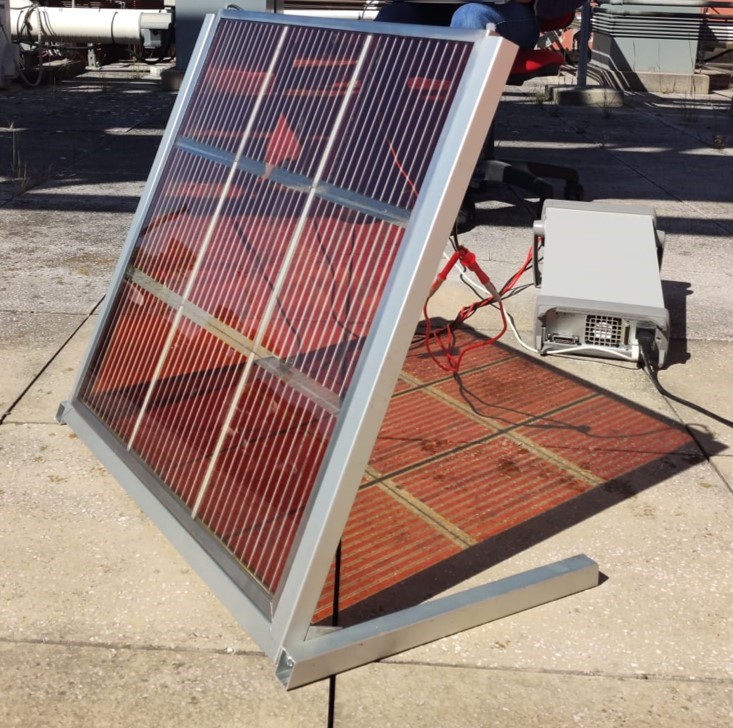Researchers at the University of Rome Tor Vergata and the Institute of Chemistry of Organometallic Compounds (CNR-ICCOM) in Italy have developed an organic solar panel based on dye-sensitized solar cells (DSSCs) for applications in building-integrated photovoltaics (BIPV).
“Some features such as color control, visible range transparency, low dependence on the light angle, optimal response in diffuse light condition, thermal and light stability and environmental sustainability makes DSSC technology very attractive for BIPVs applications,” researcher Luigi Vesce told pv magazine. “The modules developed in our work gathered all these features thanks to materials, design and process optimization. Their transparency reaches 36%, which makes the manufactured large area devices good candidates to act as glazing building envelopes, curtain-wall facades or large skylights.”
A 400 cm2 module with an efficiency of 5.1% and transparency of 35.7% was initially built with 12 semitransparent cells based on a dye known as TTZ5,a thiazolo[5,4-d]thiazole (TzTz). The scientists claim it offers strong visible light absorption.
“Modules are designed by considering the trade-off between low losses and device sturdiness,” they said.
Nine of the modules were then assembled in a large panel with an area of 0.2 sm and an efficiency of 2.7% in outdoor conditions, with a tilt angle of 60 C.
“The modules show no structural failures, electrolyte leakage, or other signs of degradation,” the academics said. “According to ISOS-D-2 and ISOS-L-1 standard tests, the modules are stable for more than 1,000 hours at 85 C and under light soaking without any electrolyte leakage, collectors corrosion or delamination.”
The researchers used a screen-printing technique to deposit silver conductors and bus bars on both cell's electrodes and the titanium oxide (TiO2) film. They embedded a photo-electrode (PE) and a counter-electrode (CE) into the cell.
“The width of the conductors was optimized according to the trade-off between the highest possible active area, sufficient space for sealant and maximum power output,” they said. “Electrodes were fired at 120 C for 30 minutes to dry the ink before the deposition of TiO2.”
The researchers described their project in “Process Engineering of Semitransparent DSSC Modules and Panel Incorporating an Organic Sensitizer,” which was recently published in RRL Solar.
This content is protected by copyright and may not be reused. If you want to cooperate with us and would like to reuse some of our content, please contact: editors@pv-magazine.com.




By submitting this form you agree to pv magazine using your data for the purposes of publishing your comment.
Your personal data will only be disclosed or otherwise transmitted to third parties for the purposes of spam filtering or if this is necessary for technical maintenance of the website. Any other transfer to third parties will not take place unless this is justified on the basis of applicable data protection regulations or if pv magazine is legally obliged to do so.
You may revoke this consent at any time with effect for the future, in which case your personal data will be deleted immediately. Otherwise, your data will be deleted if pv magazine has processed your request or the purpose of data storage is fulfilled.
Further information on data privacy can be found in our Data Protection Policy.